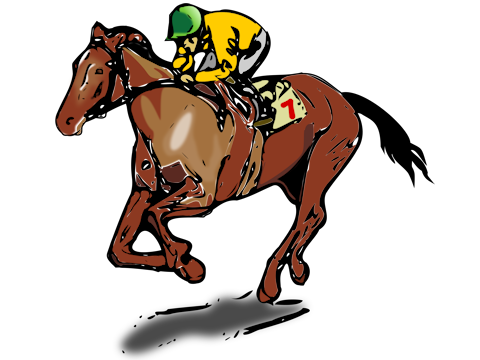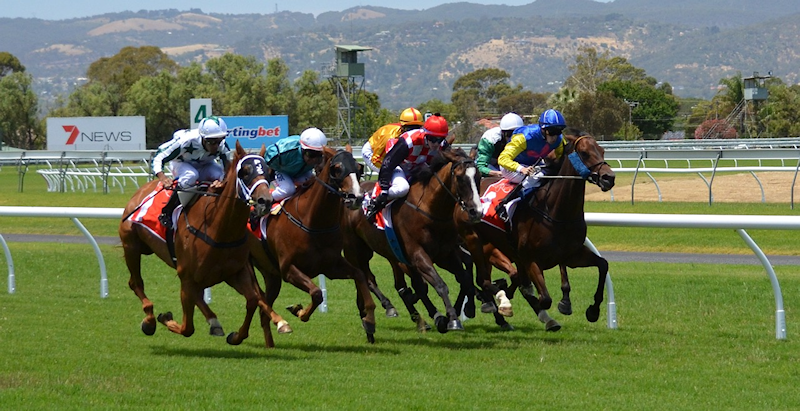 19.07.2024 - The journey to becoming a champion racehorse involves more than just raw talent. It requires a meticulously crafted training and conditioning regimen designed to maximize performance while maintaining the horse’s health and well-being. This blog dives into the rigorous routines and the vital roles of trainers, jockeys, and veterinarians in preparing racehorses for the intense competition.
19.07.2024 - The journey to becoming a champion racehorse involves more than just raw talent. It requires a meticulously crafted training and conditioning regimen designed to maximize performance while maintaining the horse’s health and well-being. This blog dives into the rigorous routines and the vital roles of trainers, jockeys, and veterinarians in preparing racehorses for the intense competition.

The Foundation of a Champion: Early Training
1. Breaking and Initial Training
The journey of a racehorse begins with "breaking," where young horses are introduced to basic handling and riding. This stage is crucial for establishing trust between the horse and its handlers. Trainers work patiently to acclimate the horse to the saddle, bridle, and rider, ensuring a solid foundation for future training.
2. Building Basics
Once the horse is comfortable with basic handling, the training intensifies. Horses are gradually introduced to galloping and different track surfaces. This phase focuses on developing stamina and speed, with gradual increases in intensity to prevent injury. Trainers pay close attention to each horse’s response to training, tailoring programs to individual needs.
Rigorous Conditioning: Developing Speed and Endurance
1. Interval Training
Interval training is a staple in the conditioning of racehorses. This involves alternating periods of high-intensity galloping with slower-paced recovery phases. This method helps build cardiovascular endurance and muscular strength. The intensity and duration of these intervals are carefully monitored to ensure optimal development without overstraining the horse.
2. Hill Work
Incorporating hill work into training routines strengthens the horse’s hindquarters, which are critical for powerful strides. Galloping uphill increases resistance, enhancing muscle tone and overall strength. Trainers often use natural terrain or specialized training tracks with inclines to incorporate this exercise effectively.
3. Swimming
Swimming is an excellent low-impact exercise that builds cardiovascular fitness and muscle strength without stressing the horse’s joints. Many training facilities have equine swimming pools where horses can engage in regular swim sessions. This method is particularly beneficial for injured horses, aiding in recovery while maintaining fitness.
Nutrition: Fuelling Performance
1. Balanced Diet
A champion racehorse’s diet is carefully formulated to meet the high energy demands of training and racing. Nutritionists work with trainers to ensure a balanced intake of carbohydrates, proteins, fats, vitamins, and minerals. High-quality forage, grains, and supplements are combined to provide optimal nutrition.
2. Hydration
Proper hydration is critical for maintaining peak performance. Horses lose a significant amount of fluids through sweat during training and races. Electrolyte supplements are often added to their water to replace lost minerals and maintain fluid balance.
Veterinary Care: Ensuring Health and Well-being
1. Regular Check-ups
Veterinarians play a crucial role in maintaining the health of racehorses. Regular check-ups help detect and address any health issues early. Routine veterinary care includes dental exams, vaccinations, and parasite control. Vets also monitor the horse’s overall condition and make recommendations for any necessary adjustments in care or training.
2. Injury Prevention and Management
Despite the best care, injuries can occur. Veterinarians and trainers work together to develop injury prevention strategies, including proper warm-ups, cool-downs, and the use of protective gear. In case of injuries, vets provide treatments ranging from rest and physiotherapy to more advanced medical interventions. The goal is to ensure a swift and complete recovery, minimizing downtime.
The Role of Jockeys: Fine-tuning Performance
1. Understanding the Horse
Jockeys spend significant time with the horses they ride, learning their quirks and preferences. This understanding helps jockeys to communicate effectively with the horse during a race, optimizing performance. Building a strong rapport with the horse is essential for success on the track.
2. Weight Management
Maintaining an optimal weight is crucial for jockeys. They follow strict diets and exercise regimes to stay within weight limits, ensuring they don’t hinder the horse’s performance. Jockeys also work on their strength and fitness to handle the physical demands of racing.
Technological Advances: Enhancing Training and Performance
1. Wearable Technology
Modern training incorporates wearable technology to monitor a horse’s vital signs and performance metrics. Devices such as heart rate monitors and GPS trackers provide real-time data, allowing trainers to adjust training intensity and identify potential issues early.
2. Biomechanics Analysis
High-speed cameras and motion analysis software are used to study a horse’s gait and stride. This analysis helps identify inefficiencies or abnormalities in movement, enabling trainers to make precise adjustments that improve performance and reduce injury risks.
Mental Conditioning: Preparing for the Pressure
1. Desensitization Training
Racehorses are exposed to various stimuli to prepare them for the noise and excitement of race day. Desensitization training includes exposure to loud noises, large crowds, and other distractions, helping horses remain calm and focused during races.
2. Routine and Consistency
Maintaining a consistent training and care routine helps reduce stress and anxiety in horses. Familiar patterns provide a sense of security, allowing horses to perform at their best.
Horse Racing Betting: Adding Excitement to the Sport
Horse racing betting is a popular aspect of the sport, adding an extra layer of excitement for spectators. Understanding the rigorous training and preparation that goes into making a champion can enhance appreciation for the sport and inform more educated betting decisions.
Training and conditioning champion racehorses is a complex and meticulous process involving the combined efforts of trainers, jockeys, veterinarians, and advanced technology. From rigorous physical conditioning to precise nutritional plans and innovative technological tools, every aspect is carefully managed to ensure horses reach their peak performance. As technology continues to evolve, the methods for preparing racehorses will only become more sophisticated, promising even greater achievements in the world of horse racing.




